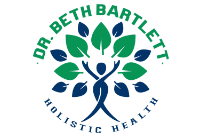Do you have problems with hay fever or seasonal allergies, especially in the spring?
With all the new growth in nature, you can’t step outside without experiencing the discomfort of itchy and watery eyes, stuffed-up nose, and sneezing……and your anti-histamine just isn’t cutting it?
The culprit: Histamine Imbalance
Histamine is an inflammatory hormone that is produced by mast cells (immune cells) in the body. Our body makes histamine and we also consume histamine from certain foods. Herein lies the problem:
producing/consuming too much histamine, coupled with the body’s inability to clear it can lead to a broader issue, MCAS or mast-cell activation syndrome.
Some symptoms of Mast-Cell Activation Syndrome, MCAS, can include:
- Brain fog
- Sinus congestion
- IBS
- Indigestion
- Rashes, eczema, swelling, itchy skin
- Headaches, migraines
- Nausea, vomiting
- Heartburn/reflux
- Palpitations/chest pain
- Fatigue
- Anxiety/irritability/depression
- Joint pain
Diet and Histamine:
If you suffer from some of the symptoms listed above, short-term avoidance of these foods could help provide some relief. Here are some high-histamine foods, listed from highest to lowest:
Fermented foods: Sauerkraut, kimchi, kombucha, kefir, Miso, soy sauce, and tempeh are high in histamine because histamine-producing bacteria are involved in the fermentation process.
Aged cheeses: Parmesan, blue cheese, cheddar, and other aged cheeses contain high levels of histamine because histamine is produced as the cheese ages.
Smoked or cured meats: Bacon, sausage, salami, and other smoked or cured meats contain high levels of histamine because the smoking and curing processes produce histamine.
Shellfish: Shellfish such as shrimp, crab, and lobster are high in histamine because they contain histidine, which can be converted to histamine in the body if the shellfish is not fresh.
Alcoholic beverages: Wine, beer, and champagne contain histamine because histamine is produced during fermentation.
Dried fruits: Raisins, prunes, figs, and other dried fruits are high in histamine because they are often stored for long periods, which can cause histamine to accumulate.
Leftovers: As food sits in the fridge for a few days, they start to produce histamine, similar to fermented foods, and can be a trigger for sensitive individuals.
Recommendations
- Quercetin: a plant compound that supports normal histamine metabolism and can have anti-inflammatory effects. Apples, asparagus, onions and broccoli are good sources of quercetin.
- Stinging Nettle: helps promote a normal inflammatory response. Nettle tea is sold in most grocery stores.
- Baicalin Skullcap: Inhibits inflammatory cascade and provides immune cell function support.
- NAC (N-Acetyl Cysteine): supports healthy respiratory, cellular, brain and neuronal tissue.
Following are links to some of my favorite products that I recommend for histamine imbalances.
HistaEze – HistaEze is a dietary supplement that supports normal histamine levels.
Quercetin and Nettles Quercetin and Nettles is a dietary supplement with anti-inflammatory and anti-histamine properties.
NAC – NAC is an amino acid and the precursor to the body’s most powerful antioxidant, glutathione. A password is required to order online – submit your email for the password.
Magnesium Bis-Glycinate with L-Taurine – This is another Matrix Nutritional dietary supplement. Most folks are deficient in magnesium; one of the most important minerals in the body. It is nature’s muscle relaxant, tranquilizer and pain-reliever.
Still not sure? Schedule a phone consultation or an office appointment.

